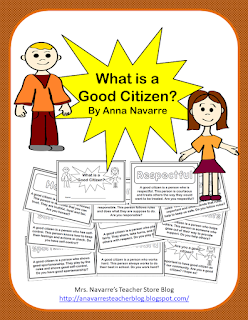We know that students learn to read through both a systematic approach to phonics and the learning of sight words. Providing students with this practice is a big part of what we do as teachers.
Using poems in the classroom is one thing that you can do to provide students with some extra practice and help build strong readers. As students practice the poems they gain knowledge of the words. These words become sight words that students remember. They also work to apply their phonics skills as appropriate. Students gain confidence as they experience success in reading the poems on their own.
I’ve mentioned using poems in a few of my other blog posts, but that is because using poems is a reading strategy that I feel strongly about. I like to share the strategy that I use for poems because I don't think it is a commonly used strategy and I definitely think that this strategy is worth the time.
There are many different types of poems. You can use poems for different seasons, holidays, famous people, or anything else that you can think of. When I choose a poem, I look for a poem that is grade appropriate and that has a picture that can be colored. The picture is an important part of how I use the poems. My focus is not really on what the picture is, but that it has a picture that can be colored a little at a time.
When I teach a new poem I provide students with their own copy and then project it on a screen so that we can go through the poem together. I like to read the poem together at least two or three times. The first time we read it through just for fun. The second time that we read it we focus on keywords, new vocabulary, and talk about the poem. Then we might read it through a third time again for fun, but also with a better understanding.
The next thing I do is have students partner read the poem. You can have students work with just one partner or switch partners. Pairing a struggling reader with a more proficient reader is a good idea. You could also pair two struggling readers, but you would probably need to be the one to provide the needed support.
After students have read with a partner I like to have students practice reading the poem on their own. They read the poem all of the way through and then they color one section of the picture. They read the poem again and then color another section of the picture. Students continue rereading the poem and coloring different parts of the picture. This can be modified for struggling readers by having them focus on part of the poem rather than the whole poem. They read the part that they are working on and then color a section of the picture. Students will usually let you know when they are ready to move on to another section of the poem, or you can make that decision.
All of this does not need to be done in one day. You can break it up and do as much as time permits. It is helpful for students to have a poem folder. This way they know where the poem is and they can pull it out when you want them to work on it.
A poem folder is great for students to use during independent reading time or during a cooldown period. Students are already familiar with the poems and able to practice read with success.
You might also want to consider having a poem folder with the poems that students have practiced as part of your reading center. I have found that students tend to choose reading material that they are comfortable with and often choose to partner read these poems during this time.
I'm sure you already have a collection of poems, but maybe this blog post has given you an idea for using them in a different way. If you are looking for a quick resource to add to your collection of poems, you might want to check out my "Poems for the School Year" packet. It is a collection of poems that I have found helpful.
Using poems is a great way to help students learn to read. They continue to build their sight word knowledge and practice using their phonics to decode words that they don’t know. The repetitive practice provides support for all readers and helps to build strong and confident readers.

















